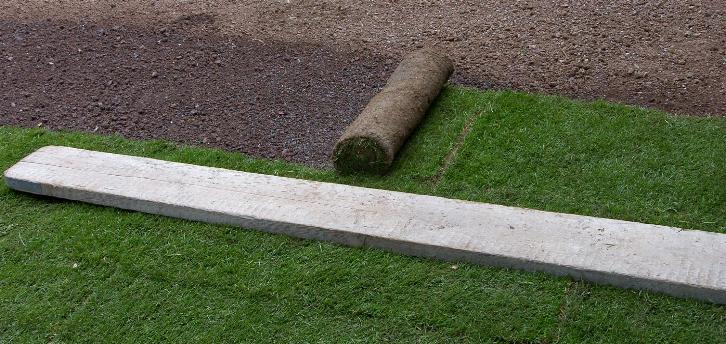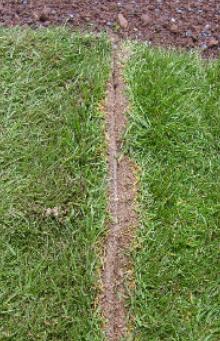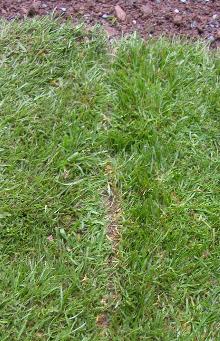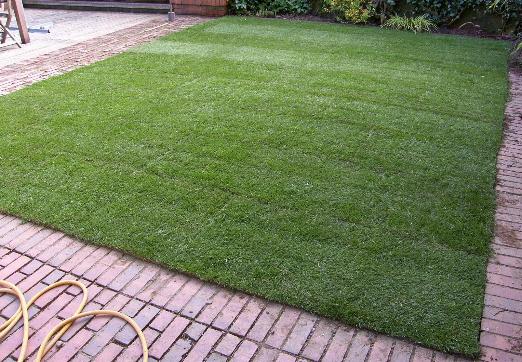Preparation Seed and Sowing Maintenance Lawnmowers Weeds and Pests
To lay turf the area is prepared in exactly the same way as for sowing seed, but the achievement of the final result is shortened by laying a prepared sward. A small allowance being made for the level of finish at paths and kerbs so that the finished surface is flush to make mowing easier.
The turf is usually grown by a specialist nursery on a grand scale, when mature it is skimmed off in rolls of about one square metre and sold directly or at garden centres. It is advisable to order the turf in advance and pick it up on the day it is delivered. If it sits around for a few days it dries out, being rolled up the lack of light causes the grass to turn yellow and die. Turf with any signs of yellowing should not be used, it may recover eventually, but any advantage in paying the extra cost over using seed is lost, and it may have to be oversown anyway to thicken up the sward.
It can be ordered in different qualities from rougher utility to fine quality and even a wildflower mix. The rolls should be capable of being held aloft without falling apart, indicating that the roots have developed well enough; although growers now tend to lay a fine netting mesh when sowing so this holds the turf together.

Work off a plank when laying the turf.


Roll the turf out on the prepared area overlapping the edges by about 1cm at all joins, then lift both sides and align the lower edges (far left) before pushing downwards to make a tight union (left). Stagger the joints in adjacent rows - like the overlaps of bricks.
Lay a plank on the new turf and work off it laying the grass ahead of you to avoid compacting or gouging the soil which should have a fine tilth on the surface; water the ground ahead if the soil is dry. Trim the edges and use the trimmings to fill any small gaps. Use the plank to compact the sods by thumping on it with a heavy hammer, starting at one side and rolling it over to progress across the surface.
Keep the new lawn well watered in the next few weeks, there is nothing worse than the sight of brown curly edges criss-crossing a patchy green and yellow 'lawn'. A long soak every few days is better than more frequent drizzles as it encourages the roots to go deeper. It should be left undisturbed until definite signs of root-growth begins, then mowing can start just like a newly sown lawn.

The turf for the new Wembley Stadium in London was grown at a secret location somewhere in England. After exhaustive testing to find the most suitable species for the playing surface, the seed was sourced in the rival footballing nations Germany, Holland and France. The specially prepared seedbed was laid over sharp sand to discourage earthworms from spoiling the surface with their casts. Unfortunately the choice of turf has not been a great success with many replacements; in March 2010 the 10th relaying was announced which will cost about £90,000. This is probably due to the multiple uses the stadium is put to, from pop concerts to speedway racing as well as football.